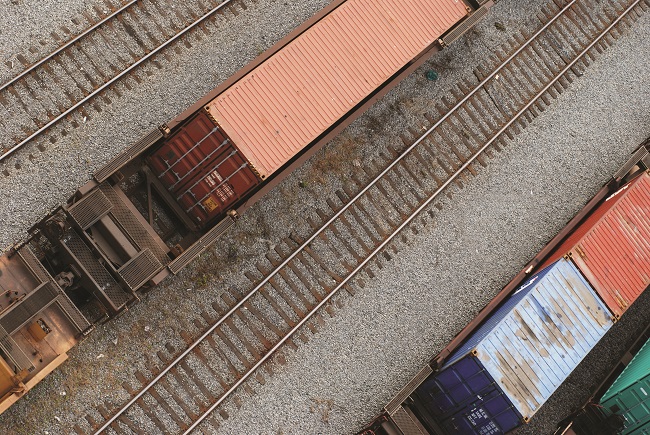
Imagine that you run a lumber company, and you need to ship plywood from Oregon to Maine. Your shipment would move on multiple railroads to travel the approximately 2,600 miles from origin to destination.
What if those railroads each used different information to identify where exactly the railcar carrying your shipment was to be interchanged along the way?
Your plywood shipment would probably take a lot longer to get to Maine.
If it got there at all.
Industry Reference Files (IRFs) serve as the North American freight rail industry’s official code tables. IRFs enable data consistency that helps the rail industry manage the movement of 1.7 trillion ton-miles of products every year in the most efficient way possible. They are the sources the railroads involved in your shipment would use for critical information like station locations and the commodities they’re supposed to be moving. As the hub for industry data, Railinc maintains 12 IRFs and uses them to support essential rail systems and operations.
“IRFs are vital to the rail industry because they play a role throughout the entire lifecycle of a rail shipment,” said Rob Drew, Railinc’s IRF product manager. “You can think of IRFs as data as a service (DaaS) that Railinc maintains on behalf of the rail industry and its customers. The real value of IRFs is that everybody in the industry is working off the same set of reference data.”
IRFs Provide a Single Source for Essential Information
The first railroad moving your plywood knows exactly where it will hand off your shipment to the second railroad because they’ve both gotten the location address from the same source. In this case, they’re using data from the Centralized Station Master, a geographic location file that contains information about rail and motor carrier point stations.
|
Industry Reference Files serve as spell checkers, data dictionaries and thesauruses supporting communications within railroads and across the industry.
|
The dozen IRFs that Railinc maintains are full of other details such as railroad personnel contact information; route origin, interchange and destination points; customer names and locations; commodity types; information on hazardous materials; and shipment types. They serve as spell checkers, data dictionaries and thesauruses supporting communications within railroads and across the industry.
These files help railroads plan freight movement, transport hazardous materials safely, identify revenue routes, apply switch charges accurately, communicate delivery instructions and ensure billing accuracy. Without IRFs, railroads and their partners and customers would have a difficult time communicating about these activities, and railroad traffic would slow.
IRFs Play Role Through Rail Shipment Lifecycle
IRFs contain essential information that gets used even before your plywood shipment is loaded on a railcar. When you’re ready to move your plywood by rail, you create a bill of lading and send it to the first railroad. That railroad uses the information you’ve provided to create a waybill with details and instructions for your shipment. Waybills include information from several IRFs, including the Customer Identification File (CIF) to identify the customer, the Mark to identify the rail carriers involved and the Standard Transportation Commodity Code (STCC) to identify the commodity being shipped.
CIF contains about 300,000 records. Carriers use CIF data to identify customer locations where price and other contract terms apply so they can provide accurate delivery instructions and improve shipment reservation, booking and equipment-ordering processes.
CIF includes the name, physical and mailing address, corporate parent identifier and a unique identification code for each location managed by the corporate parent. Carriers don't have to worry about inconsistent data because the information is managed using the same standards by a single entity—Railinc. Our employees receive new entity, name change and other requests and update CIF information daily.
Because more than one railroad will carry your plywood, information from IRFs is required to help determine the rate each carrier will charge the shipper. IRFs enable railroads to automatically split up and settle payments among carriers and help to ensure that shipments are routed properly and switch charges are applied correctly.
IRFs Feed Critical Industry Systems
But IRFs aren’t just standalone reference resources. Critical industry systems like the Interline Settlement System®, the Umler® system and the Damaged and Defective Car Tracking (DDCT) system rely on the information they contain to function.
For example, the Mark register contains a record of all reporting marks, the alphabetical characters stenciled on every railcar to identify the railroads, shippers and equipment companies that own or lease them. Marks support electronic interactions among railroads, their customers and Railinc systems and files and are used for revenue accounting purposes like car hire and car repair billing.

If your shipment travels on more than one carrier, industry rules require that the car that carries your plywood to Maine must be registered in the Umler system, a cornerstone industry database that contains information on more than 2 million pieces of rail equipment in North America. The Umler system uses the Mark register to identify equipment owners and lessors. This ownership information, combined with the data in the Umler system, helps to ensure car hire billing and demurrage and other fees are assigned to the right entity.
Mark information and other IRFs also play critical roles in DDCT, which provides a centralized system for freight car owners, railroads, repair shops, and scrap and storage facilities to track damaged and defective railcars. DDCT uses Mark, STCC and other data so handling carriers can search and enter crucial information for cars that are being tracked.
Freight rail industry rules also require DDCT users to register in FindUs.Rail, an IRF that contains contact information for industry participants. DDCT uses FindUs.Rail data to send notifications throughout the DDCT workflow, keeping industry participants informed about incidents and repairs.
So by the time you close the books on your shipment, it’s possible that as many as 11 of the 12 IRFs will have played some role in getting your plywood to Maine. (Had you been shipping hazardous materials, all 12 IRFs would have had a role.)
“IRFs are sort of like the little engine that could,” Drew said. “On the face of it, they might just seem like lists of addresses and commodity codes and company names. But they’re dependable and indispensable, and they’re essential to helping the North American rail industry keep trains moving and efficiently serve customers.”
—Railinc Corporate Communications
